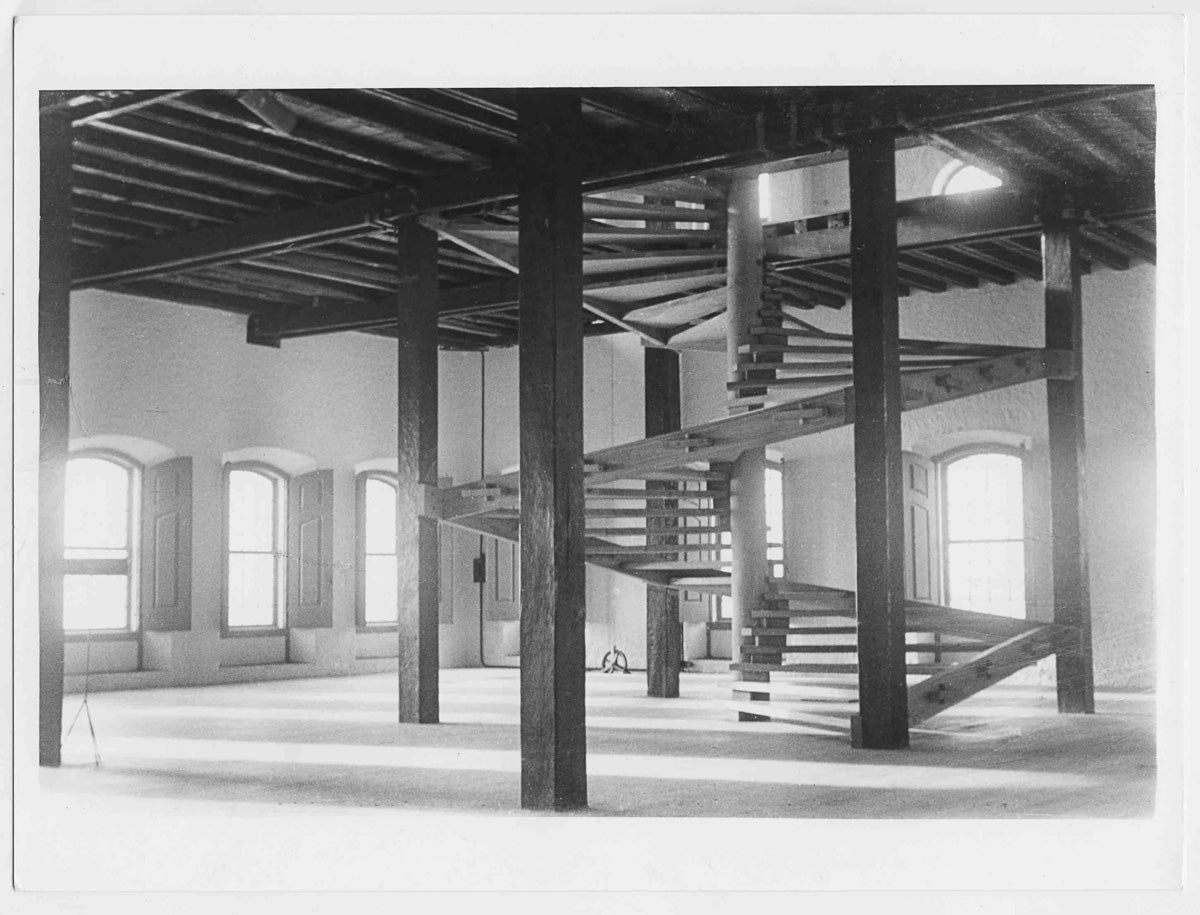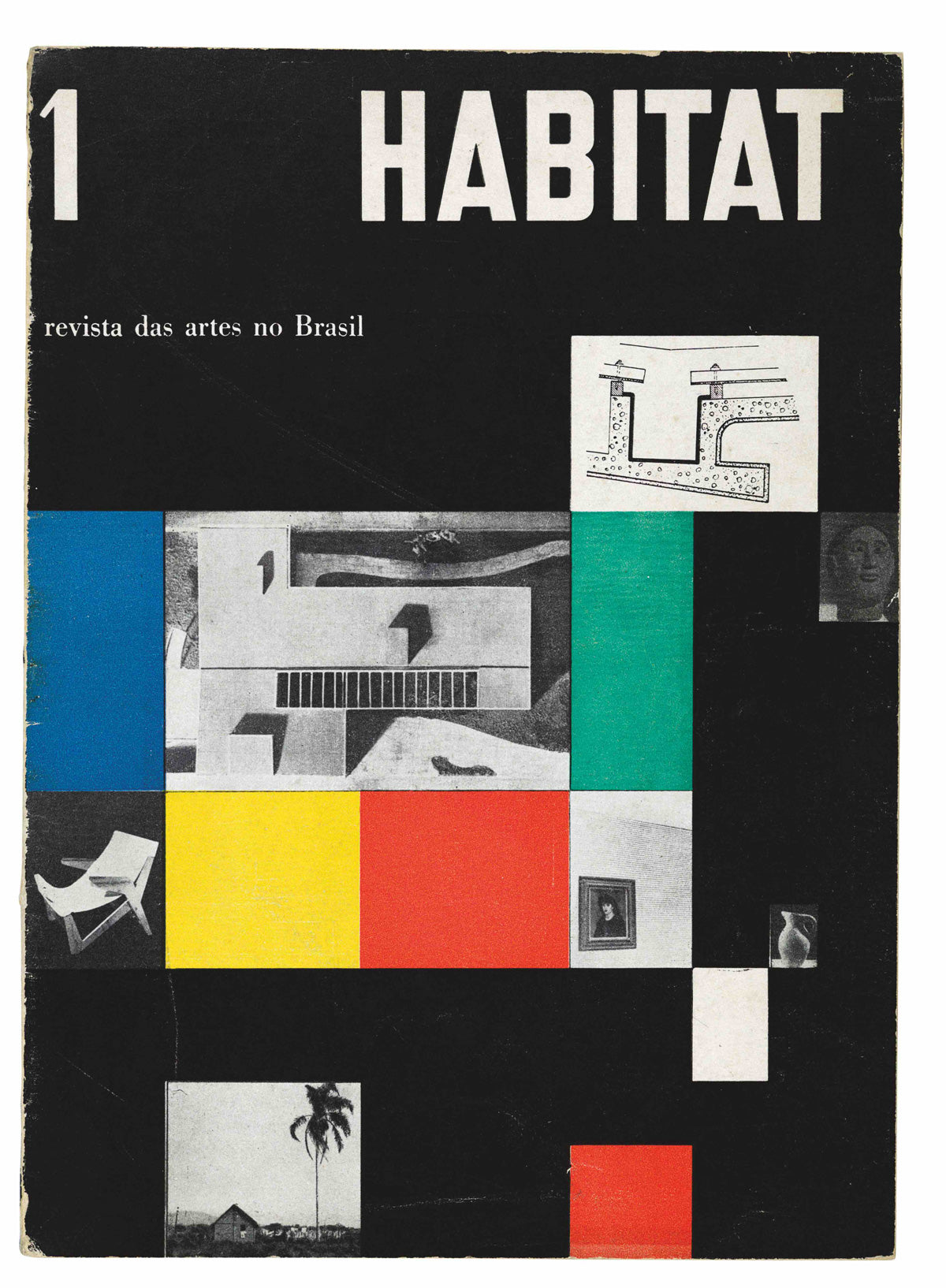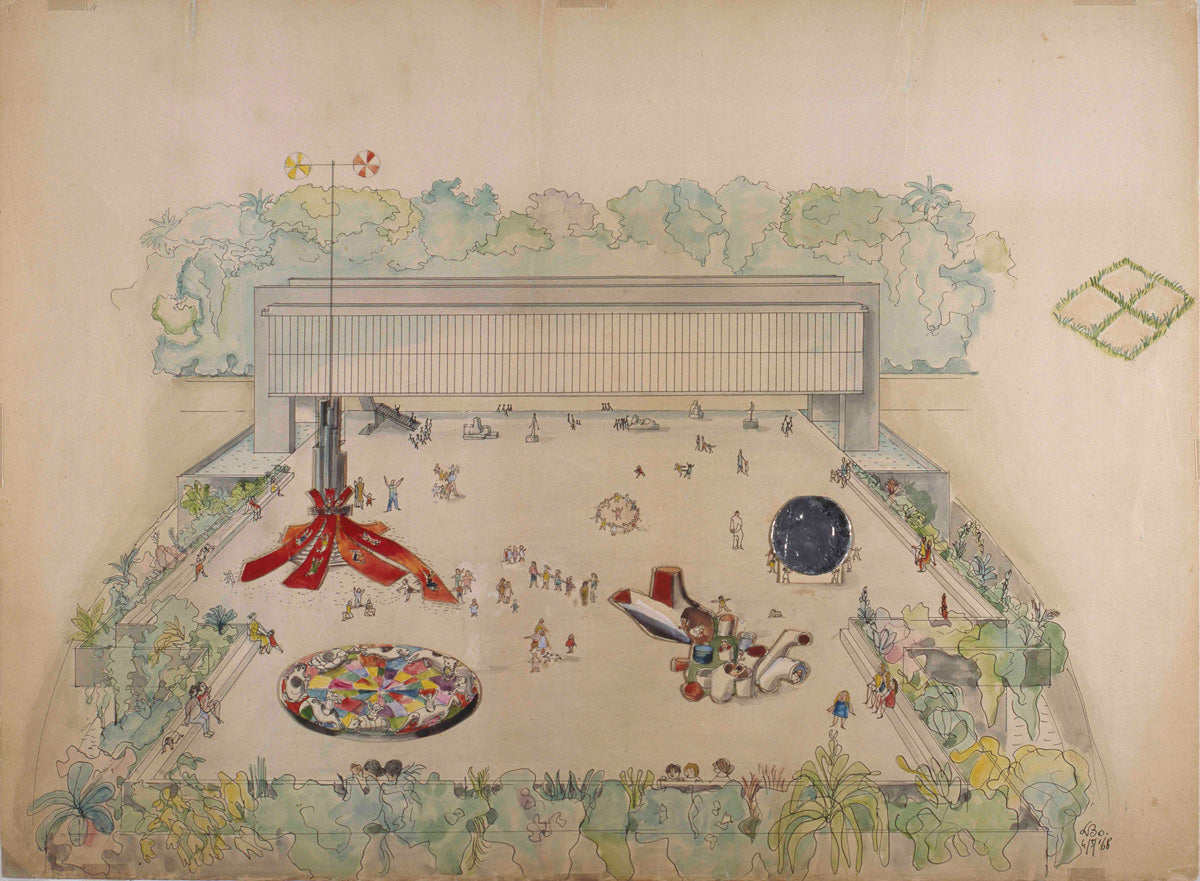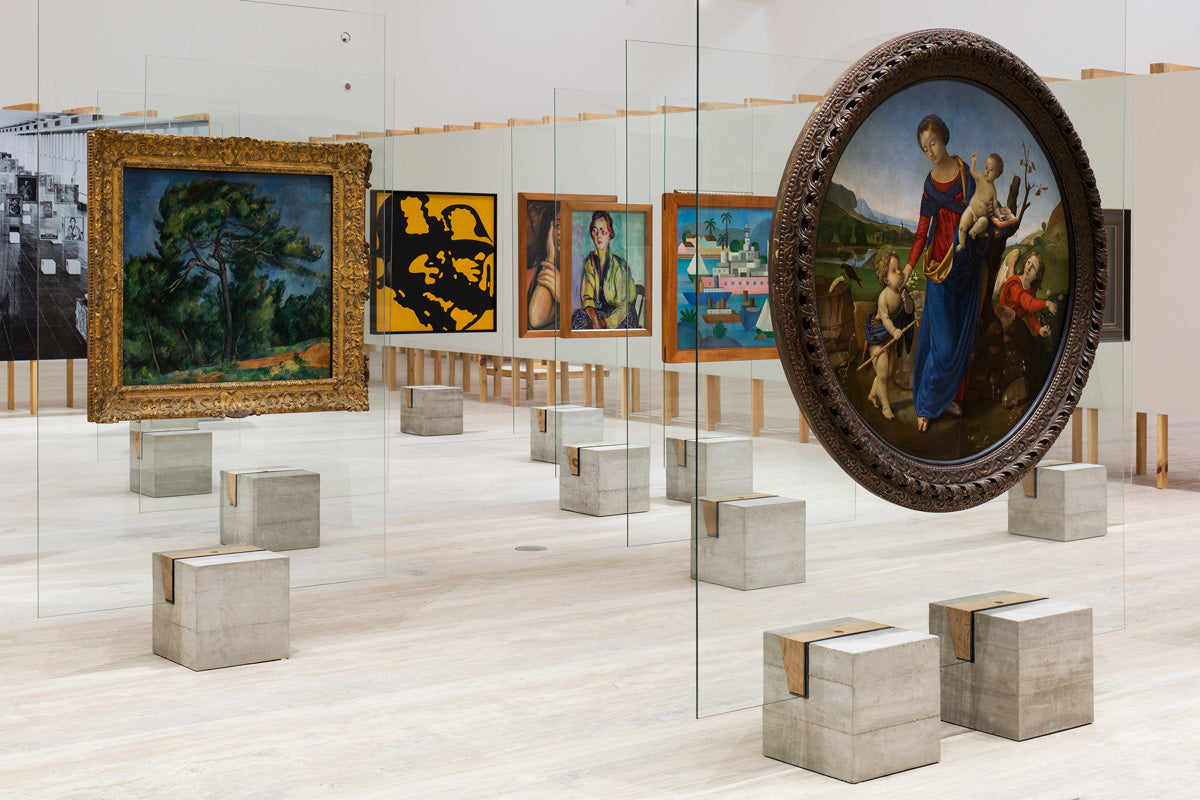In a time when steel and glass took over design, Architect Lina Bo Bardi questioned the canons of cultural assessment, leaving a different legacy behind. Both her contributions and the career that precedes them are the main topic of the exhibition Lina Bo Bardi: Habitat, at Museo Jumex.
Lina Bo Bardi (1914-1992) was born in Italy, where she also received her education as an architect, her most famous contributions were made in Brazil. From her early days as a professional, she showed interest in social and academic topics. She worked by the hand of theorists like Bruno Zevi in publishing Domus Quaderni, Lo Stile, and A magazines. Her work stood out for offering humanistic reflections, features from northern Italy, that valued the design of democratic spaces that promoted wellbeing.
After her relocation in Brazil, her cultural commitment gave rise to big projects, like the São Paulo Art Museum (MASP), where she published the magazine Habitat, Revista das Artes do Brasil (1950) for the first time. Her work at MASP is an approach to museum experimentation, creating proposals; for example, glass easels, which ended traditional stiffness and promoted new narratives that depended on the spectator. At the same time, her architectural production moved away from the international style in an unlearning process and added vernacular techniques and local materials. SESC Pompéia (1977-1986), cultural center about a drum factory, is the point when Bo Bardi achieves the integration of leisure space with the artistic display, through architecture.
In her writings on architecture in general and more specifically on MASP and later on SESC Pompéia, Bo Bardi constantly reassures the need for architecture to allow the lived experience, which turns into a social cohesion factor and promotes a sense of community. -Julieta González, curator of Museo Jumex.

The showing Lina Bo Bardi: Habitat, comprises the architect’s background and contributions in topics regarding museums, pedagogy, architecture, and culture, in order to understand her legacy. The tour includes leisure spaces emulating the characteristic ones within Lina’s programs, in addition to a series of images exhibited on crystal easels. As an integral part of the understanding of those architects whose work created encounters between Latin American culture and modernity, Museo Jumex will have the work of Anni Albers, Gego, and Clara Porset in temporary exhibition.





